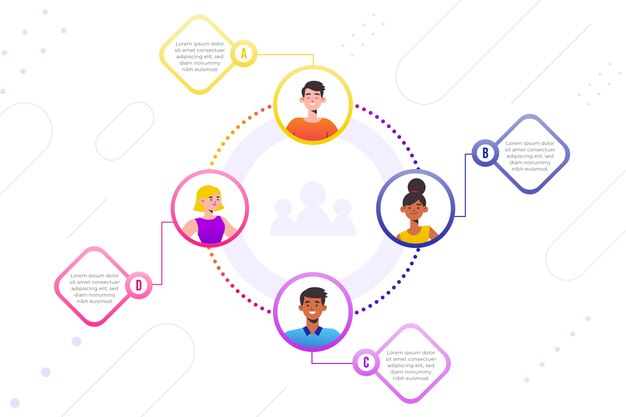In today’s digital world, more people than ever are exploring side hustles to earn extra income, gain financial freedom, and pursue their passions. A side hustle isn’t just about making a little extra cash it’s about building something that could one day replace your full-time job. With the right mindset, strategy, and consistency, you can transform a part-time project into a profitable full-time business.
Whether you’re freelancing, selling online, or building a brand, the key lies in starting small, staying consistent, and scaling smartly. Let’s explore how to start a side hustle and gradually turn it into a sustainable full-time income.
1. Identify Your Skills and Interests
The first step to starting a successful side hustle is identifying what you’re good at and what you enjoy doing. Choose something that aligns with your skills, passions, or expertise. When you love what you do, it’s easier to stay motivated even after long work hours.
- Ask yourself:
- What am I naturally good at?
- What do people often ask me for help with?
- Is there a market demand for my idea?
For example, if you’re skilled at writing, graphic design, or social media, you can offer freelance services. If you love fitness or baking, you can start coaching or selling homemade products online. The best side hustles combine personal passion with market demand.
2. Validate Your Idea Before You Commit
Before investing time or money, it’s essential to validate your side hustle idea. This means testing whether people are willing to pay for your product or service.
Start by researching your competitors, reading customer reviews, and checking platforms like Upwork, Easy, or Fever to see if similar services are in demand. You can also run a small pilot or offer your service at a discounted rate to gauge interest.
Validating early saves you time, energy, and resources helping you focus on ideas with real potential.
3. Set Clear Financial and Time Goals
A successful side hustle requires clear goals. Determine how much time you can realistically dedicate each week without burning out. Since you’ll likely start alongside your day job, balance is crucial.
Also, define your financial targets. For example, your short-term goal might be to earn an extra $500 a month, while your long-term goal could be replacing your full-time income.
Having measurable goals keeps you motivated and helps you track progress. Over time, these small wins will build momentum and confidence.
4. Build an Online Presence
In the digital age, visibility is everything. To attract clients or customers, you need a strong online presence. Start by creating a professional website or portfolio showcasing your services, products, and testimonials.
Use social media platforms like Instagram, LinkedIn, Facebook, or TikTok to promote your work and share valuable content. Consistency builds trust post regularly, engage with your audience, and show behind-the-scenes insights to humanize your brand.
You don’t need to be everywhere. Focus on 1–2 platforms where your target audience spends the most time. Over time, your online reputation becomes your biggest marketing asset.
5. Manage Your Time Effectively
Time management is one of the biggest challenges when juggling a full-time job and a side hustles. To stay productive, create a weekly schedule and set specific hours for your business.
Use tools like Trellis, Notion, or Google Calendar to organize your tasks and deadlines. Focus on high-impact activities the ones that directly contribute to income, growth, or visibility.
Remember to prioritize rest. Working nonstop can lead to burnout, so take breaks and reward you for progress. Consistency is more important than perfection.
6. Start Small and Scale Smart
Don’t rush into quitting your job right away. Begin with small, manageable projects to build experience, gather feedback, and understand what works. Once you have a few paying clients or steady sales, reinvest your profits into marketing, tools, or training.
Scaling smartly means improving processes, automating repetitive tasks, and outsourcing work when necessary. Tools like Canvas, Mail chimp, and Zippier can help you save time and increase efficiency.
As your side hustle grows, focus on diversifying income streams — such as offering digital products, online courses, or subscription plans. This creates stability and long-term sustainability.
7. Build a Personal Brand
In a competitive market, people buy from brands they know, like, and trust. Building a personal brand helps you stand out and attract loyal clients.
Share your story, show your values, and be authentic. Consistently deliver value through your content, whether its tips, tutorials, or insights related to your niche. The stronger your personal brand, the easier it becomes to grow your business and charge higher rates.
Branding isn’t just about visuals it’s about creating a reputation for quality, reliability, and authenticity.
8. Network and Collaborate
Networking is a powerful way to grow any business. Join online communities, attend workshops, or connect with professionals in your field. Collaborations can expose your brand to new audiences and create win-win opportunities.
Engage with others on LinkedIn groups, Facebook communities, or niche forums. Share advice, offer help, and showcase your expertise. The more you connect the more doors you open.
Remember: people do business with people they trust and networking builds that trust faster.
9. Track Your Income and Expenses
To turn your side hustle into a full-time income, treat it like a real business. Track every dollar you earn and spend. Use accounting tools like QuickBooks, Wave, or Notion Finance Tracker to manage cash flow and taxes.
Separating personal and business finances keeps things organized and professional. It also helps you understand profitability and make informed decisions as your business grows.
When your side hustle consistently covers living expenses and generates profit, you’re ready to consider transitioning full time.
10. Know When to Go Full-Time
The right time to go full-time is when your side hustle income becomes reliable and scalable. Ideally, you should have at least 6–12 months of stable earnings or savings to cushion your transition.
Before quitting your job, plan carefully. Ensure you have steady clients, a predictable workflow, and a strong marketing pipeline. Going full-time is a big step, but with preparation and confidence, it can be one of the most rewarding moves of your career.
Final Thoughts
Starting a side hustle is more than just earning extra cash it’s about creating opportunities, freedom, and purpose. By following a clear strategy identifying your strengths, validating your idea, managing time wisely, and building a strong brand you can turn your passion project into a profitable full-time business.
The journey requires patience, persistence, and consistency. Remember, every big business once started small. Stay focused, keep learning, and never underestimate the power of small steps. Your side hustle could be the key to financial independence and the life you’ve always wanted.






